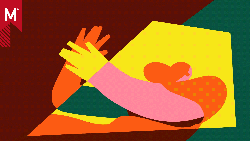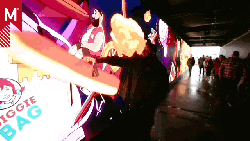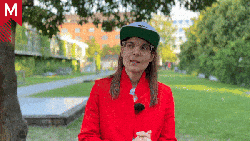Editor’s Note:
When we set out to cover Motion Plus Design 2025 in New York, we knew we weren’t just documenting a series of talks, we were capturing a cultural moment in Motion Design. Each speaker brought more than a portfolio; they brought vulnerability, urgency, and a desire to reimagine the creative process from the inside out.
Some offered technical breakthroughs. Others cracked open personal stories. But all of them asked us to pause, to question, and to reconnect with the reason we started creating in the first place.
A heartfelt thank you to the Motion Plus Design team for putting together such a great event, and to the ever-brilliant Kook, the festival’s founder and ever-charismatic MC, for holding the space with care, humor, and soul.
This series is our attempt to honor the energy that filled that theater. What follows is a written snapshot of each talk: not a replacement, but an invitation. If something here speaks to you, go watch the full talks. The moments that moved us most can’t be summarized, they need to be experienced.
Because Motion Design is no longer just a craft. It’s a language, a protest, a permission slip.
And this, this is what it sounds like when the community speaks in its own voice.
This past June, New York City became a hub for ideas that challenged traditional ways of thinking about creativity, technology, and design during the Motion Plus Design event.
From deeply personal experiences to innovations powered by artificial intelligence, each speaker shared a unique and personal perspective on what it means to create Motion Design in today’s world.
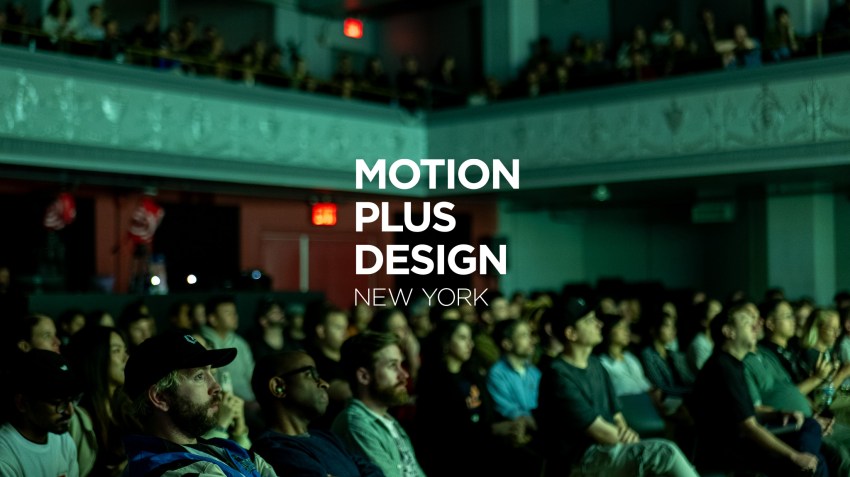
Photo by Paul Turquois
Andrew on Instinct, Trust, and the Art of Creative Crisis
For Andrew Kramer, the most exciting part of any production isn’t the perfect shot or polished result, it’s the moment when everything goes wrong.
In his talk, the founder of Video Copilot looks back on two decades of creative adventures, from his early days working with JJ Abrams to obsessing over lens flares, explosions, and all the analog imperfections that give stories their magic.
But the heart of his talk isn’t about tools or technique, it’s about intuition. What do you do when something breaks on set? How do you know which creative instinct to follow? What makes someone a calming presence in a room full of tension?
With humor and humility, Andrew shares moments where trust, in himself and others, made the difference. He reminds us that good instincts come from experience, but they’re activated by belief.
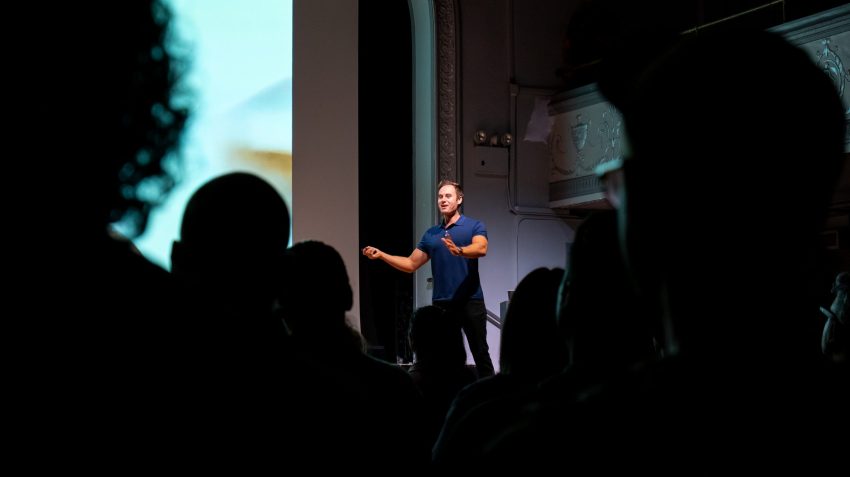
Photo by Paul Turquois
For him, the best leaders are those who stay calm when everything falls apart.
 “Instinct is your skill with one extra thing: trust.”
“Instinct is your skill with one extra thing: trust.”
This isn’t a lesson in perfection, it’s a love letter to creative messes, quick decisions, and the people who hold it all together when things fall apart.
Felix on Pirated Software, Emmy Nominations, and the Silence That Changed Everything.
From sneaking into movie theaters on the Adriatic coast to designing Emmy-nominated title sequences in Hollywood, Felix Soletic’s story is one of intuition, improvisation, and improbable turns.
In his talk at Motion Plus Design, Felix doesn’t just retrace the steps of a Motion Design career, he opens up about the unseen forces behind it. From the olive trees his family sold to fund his first semester in the US, to the dark art of “throwing the spear into the void” and hoping the work follows, he shares how instinct and discomfort shaped his path.
Felix walks us through his time at ArtCenter, early internships at Elastic, and the dizzying pace of title work for HBO, Marvel, and Netflix. But he also lets us into the moments of burnout, imposter syndrome, and self-questioning that came with success. When the world erupted over his AI-generated titles for Secret Invasion, he wasn’t even allowed to speak.
“I don’t want to make the icing on the cake anymore. I want to bake the cake.”
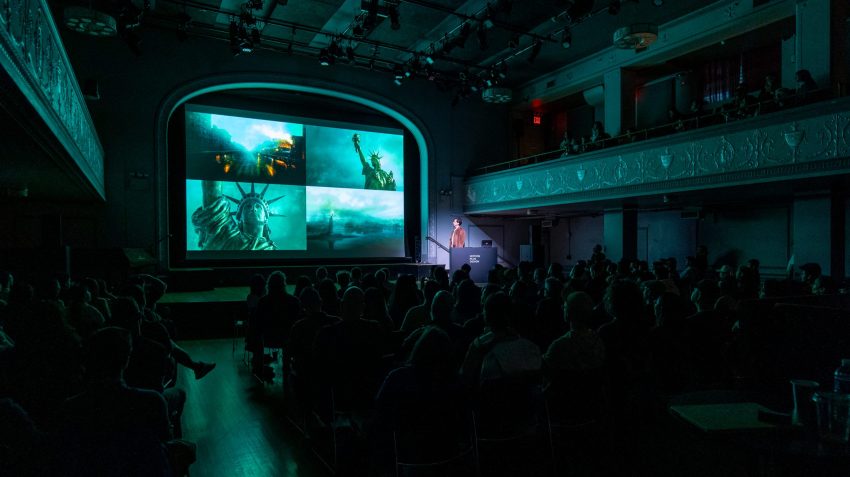
Photo by Paul Turquois
He recalled that what once made him uncomfortable, being the only Croatian in his cohort, ultimately became his greatest strength:
“I was the only kid ever from Croatia that applied and got accepted to ArtCenter, and it ended up working out, like the thing that made me most uncomfortable from being the only guy from this place ended up working in my favor.”
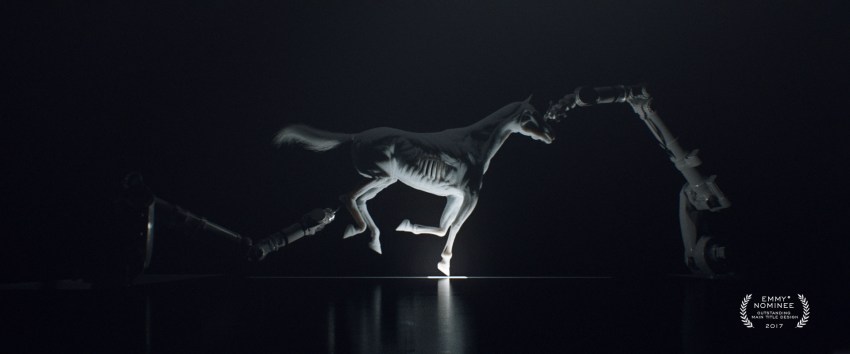
Now working quietly inside Apple’s Special Projects Group, Felix finds himself in a rare moment of stillness, and in that stillness, a new desire is taking shape. Not just to make things look good, but to make things that matter.
Joyce on Sabbaticals, Disillusionment, and Making Things That Matter
In a beautifully vulnerable talk, Joyce Ho, Creative Director at Buck, opens up about the one topic that makes many creators squirm: personal work.
But she doesn’t just talk about side projects or passion pieces, she talks about taking three months off. On purpose. Without a plan. And what happened when she finally made space for joy to return.
After 15 years in Motion Design, Joyce realized she was living in contradiction: fulfilled by her role, but slowly growing disillusioned with the work itself. “The designer and artist in me didn’t go anywhere,” she admits, “but that absence started to wear on me.”
So she took a sabbatical. No client briefs. No deadlines. Just curiosity. She learned CAD, polished metal by hand, built an incense holder from scratch, launched a shop, and collaborated with longtime friend Emily Simms to reimagine her personal brand, bringing together her Hong Kong heritage, her Australian upbringing, and her life in New York.
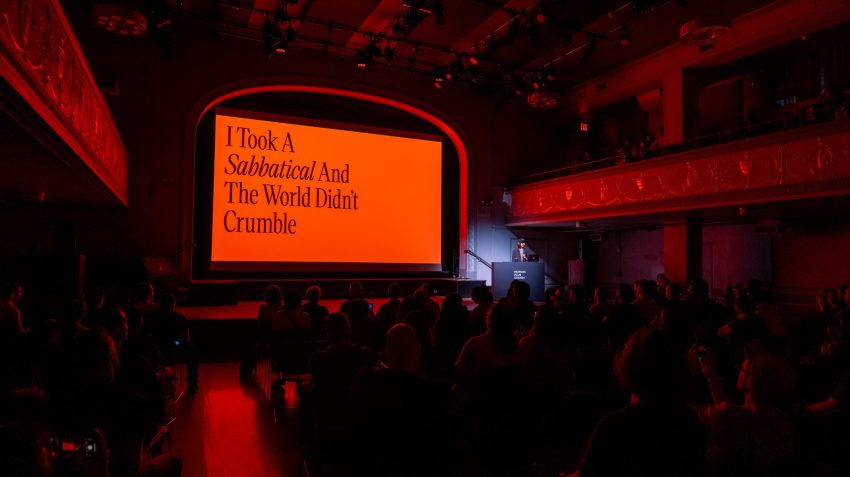 Photo by Paul Turquois
Photo by Paul Turquois
For three months, she stepped away from briefs and clients to reconnect with her creative drive.
 “I took a sabbatical and the world didn’t crumble.”
“I took a sabbatical and the world didn’t crumble.”
But more than anything, she rediscovered what it felt like to create without permission. “We didn’t get into design to sit in meetings and make decks. We got into design to design. And make things.” This is not a talk about having it all figured out. It’s a talk about carving space. About how even a little personal practice can slowly, imperfectly, become a lifeline. Joyce doesn’t tell us what to do, she shows us what’s possible when we return to ourselves.
Justin Barnes for Lucidlink, and Versus
How Versus Scales Creativity Across Continents (and Deadlines)
Justin pulled back the curtain on what it actually takes to deliver bold, high-stakes creative across the globe, at scale, and at speed.
Their secret weapon? Not just a talented team of designers, directors, and producers… but a studio infrastructure powered entirely by the cloud.
In a rapid-fire, behind-the-scenes walkthrough, Justin shared how LucidLink has transformed their production pipeline, from high-profile events like the Disney Upfronts to real-time spectacle in Times Square for Now You See Me 3, all the way to immersive content for the Las Vegas Sphere and branded campaigns like Xfinity’s 8-Ball activation.
With teams stretched across six countries and dozens of active projects, they’re not just surviving the chaos, they’re thriving in it.
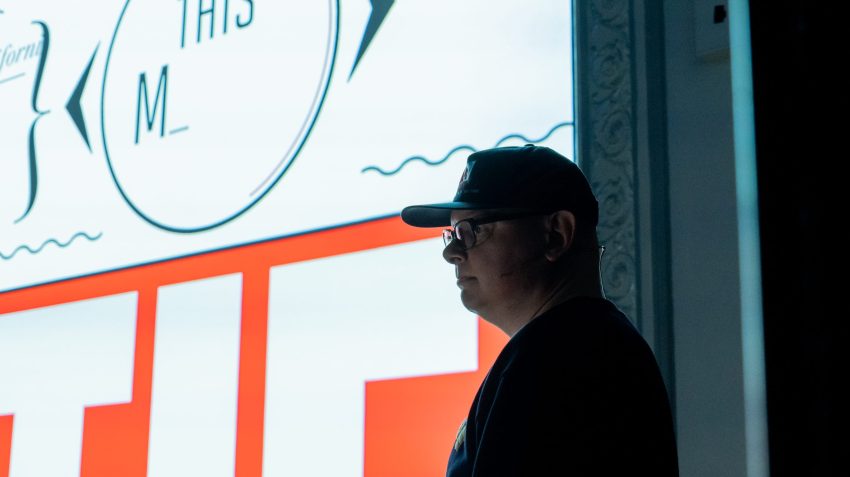
Photo by Paul Turquois
What stood out wasn’t just the tech, but the ethos: Versus treats every constraint as a creative opportunity, and every project as a chance to do something no one’s done before. From building a 20,000-pixel show for Bob Iger (while he rewrites his speech the morning of), to making $250,000 disappear into the crowd at Times Square, the talk was full of jaw-dropping moments, and genuine insights into the future of remote creative collaboration.
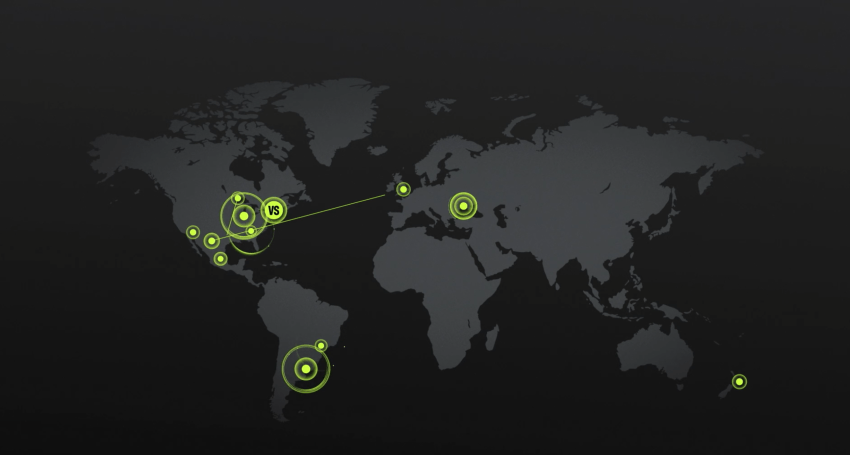 “It’s like building the plane while flying it… and somehow we always land.”
“It’s like building the plane while flying it… and somehow we always land.”
Whether you’re a freelancer working across time zones or a studio leader scaling for global clients, this talk is a window into how real teams actually get it done.
French Motion Design with a Pulse: 17MARS and the Power of Creative Tension
In a poetic, personal talk that bridged nostalgia and innovation, Geraldine the founder of 17MARS offered a heartfelt meditation on the evolution of French Motion Design, and the role of tension, risk, and curiosity in building a studio that dares to think differently.
From early inspiration in MTV bumpers and the cult TV show Culture Pub, to founding one of France’s most respected creative studios, this was a story of perseverance, vision, and staying true to one’s voice. Motion Design, she shared, is not just technique or decoration, it’s a language. And when wielded with clarity and conviction, it becomes a powerful tool for connection.
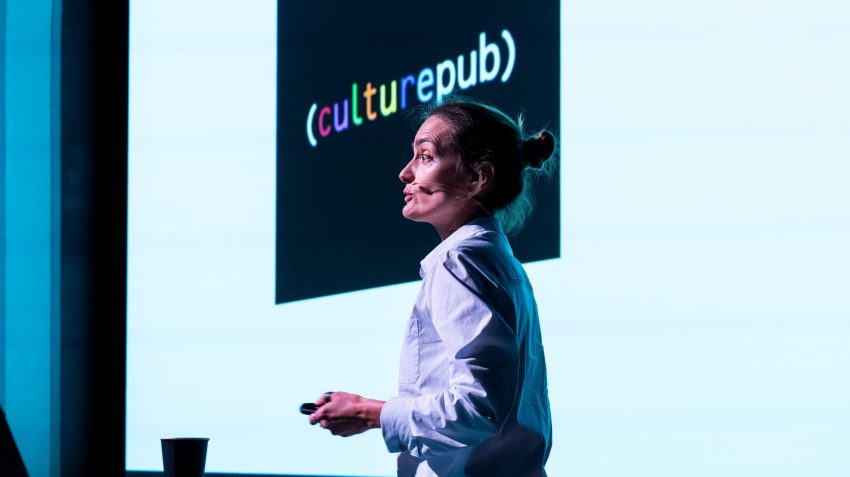
Photo by Paul Turquois
One of the most moving moments of the talk recounted a creative clash with Arte’s art director. What began as a heated disagreement over design styles ultimately led to one of 17MARS’ most celebrated collaborations: a cheeky, wool-textured Christmas campaign that blended pixel-perfect typography, custom textures, and storytelling with soul. The result? A campaign so loved by audiences that viewers downloaded patterns to knit their own jumpers, and one that just won two Silver GEMMA awards.
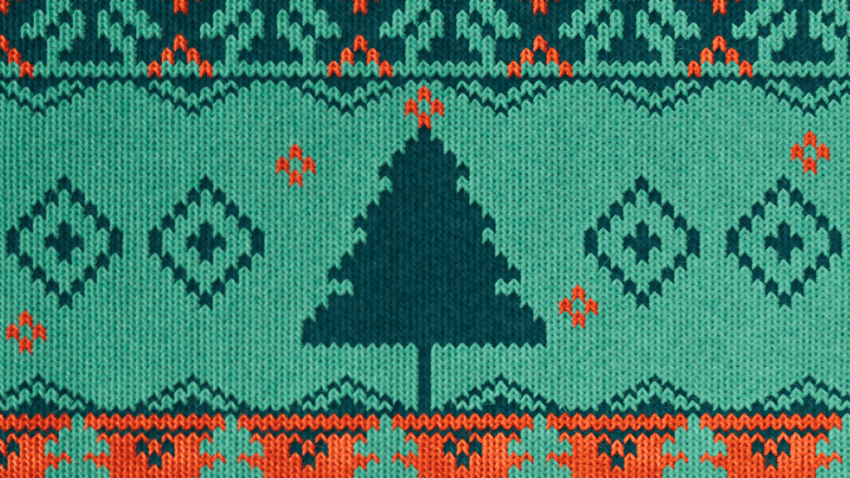 “We don’t always need to agree. Sometimes it’s because we don’t agree that the magic happens.”
“We don’t always need to agree. Sometimes it’s because we don’t agree that the magic happens.”
The talk also introduced two key dimensions of the studio:
– The Lab, where time is carved out for self-initiated experiments and new visual languages, independent of client briefs.
– 1703, a digital art hub that curates exhibitions merging design and art, connecting artists with brands, and igniting unexpected collaborations.
This wasn’t just a talk about craft. It was a call to embrace friction, listen deeply, and create work that not only moves visually, but emotionally.
Rediscover why Motion Design, when it dares to ask questions, can move the world.
Creativity, Anxiety, and the Vinyl Pug That Saved My Life
EJ Hassenfratz has taught thousands of creatives how to animate, model, and render at School of Motion. But in his talk at Motion Plus Design New York, he didn’t bring Cinema 4D or Blender. Instead, he brought something far more vulnerable: himself.
In a funny, honest, and deeply personal talk, EJ unpacks the three anxieties every creative faces, skills, creativity, and purpose, and shows how each one, if we listen closely, is actually a clue to our strength.
The talk opens with a joke about weight painting and quickly pivots to the real reason EJ is on stage: after 15 years of dreaming, he finally made his own vinyl toy, a tiny pug inspired by his real-life best friend, Gus. But this achievement didn’t come easy. Anxiety, grief, and imposter syndrome nearly shut him down. What brought him back to life was the decision to create anyway, not for likes or followers, but out of love.
From overcoming the paralysis of “too many tools” to confronting the fears triggered by AI and aging, EJ offers tools for navigating a creative career, including SMART goals, consistency over intensity, and the crucial practice of making personal work, especially when client work feels empty.
He reminds us that you don’t find your voice before you start creating, you find it by creating. His path from public speaking failure to full-circle educator proves that the only way to get better at something is to be bad at it first. Whether sculpting toys, helping his wife write a children’s book, or handing out pug stickers in Seoul, EJ’s message is clear: make what brings you joy.
And when grief took his joy away, it was art, not words, that helped him heal. Creating became his therapy. “When you create out of love, you can’t fail,” he says. “The worst that can happen is you’re happy.”
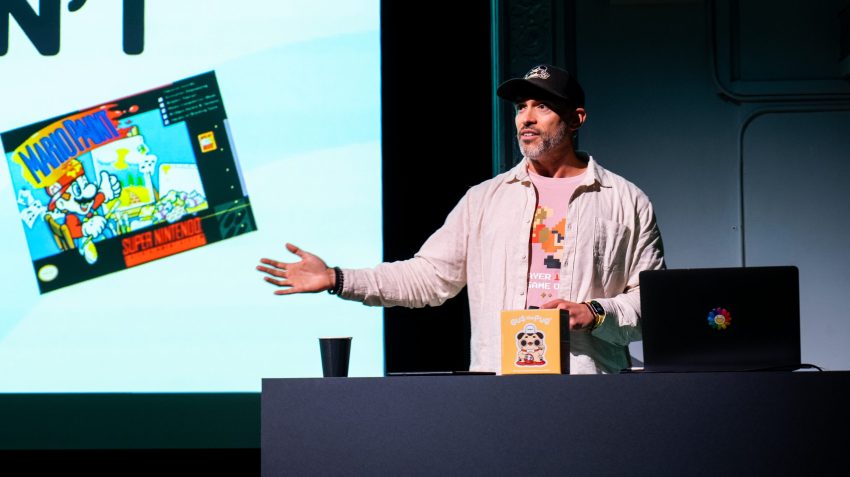
Photo by Paul Turquois
He explained that his impatience pushed him to seek real-time results through live rendering techniques. “We transformed our piece into this city light show from there,” he said, showing how one project grew to light up 44 buildings in Shenzhen.
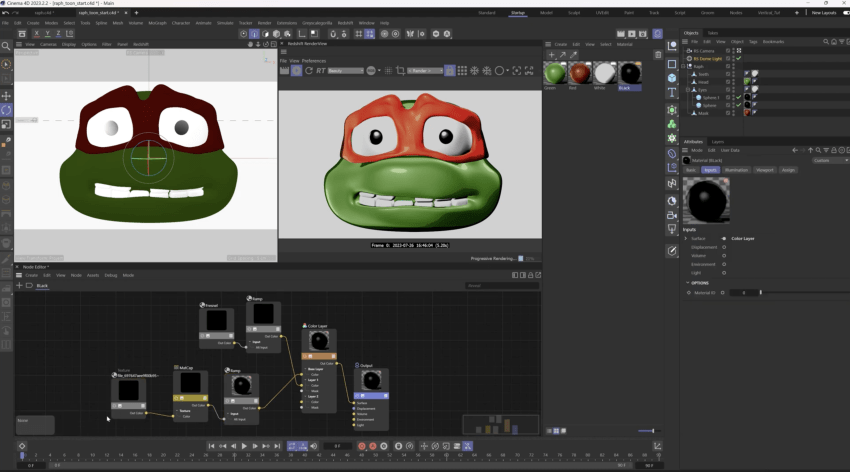
EJ’s talk isn’t a masterclass, it’s a heart-to-heart for every artist quietly comparing themselves to Instagram reels or questioning their purpose in a post-AI world. It’s about reclaiming joy, leaning into fear, and telling the one story no one else can: your own.
Phillip Gara on the Power of Decentralized Rendering
Unlocking Unlimited Creativity
Phillip Gara, Chief Strategy Officer of Render Network, revealed what the future of rendering looks like when creative limitations are stripped away, and the answer is staggering. The Render Network is a decentralized GPU compute platform enabling artists to tap into a global pool of idle computing power, delivering high-performance rendering at a fraction of the usual cost.
Over 750,000 works and more than 50 million frames have already been processed on the platform. But this wasn’t just a keynote about technical milestones, it was a love letter to the future of creative freedom. From immersive 16K dome visuals created in collaboration with artists like David Ariev and Blake Catherine to Zedd’s Coachella performance and Eric Prydz’s Holosphere 2.0, Gara demonstrated how Render is already pushing the boundaries of what’s visually possible.
A key theme of the talk was accessibility. Render’s integrations now include native Cinema 4D support, Redshift, Octane, and Blender’s Cycles engine, with Arnold coming soon. New features like differential uploading and a Render Network Manager streamline workflows, while the API opens the door for seamless fusion between 3D workflows and generative AI tools, from text-to-video to video-to-video and even real-time Gaussian Splat rendering.
“I’m really excited to see what you create when GPU rendering is no longer a barrier.”
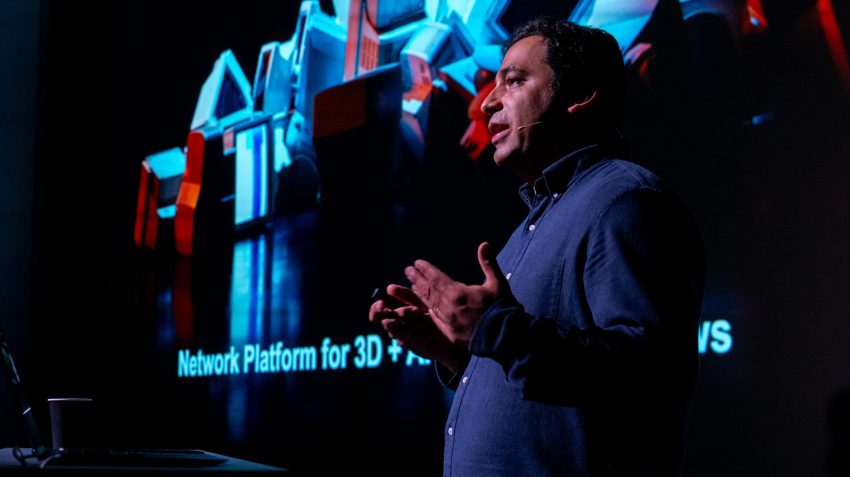
Photo by Paul Turquois
Make the Weird Thing You’ve Always Wanted
For nearly two decades, Leilanni Todd worked across advertising, fashion, and design for top-tier clients like Apple, Google, Airbnb, and The New York Times. But despite her impressive resume, she often found her creative vision diluted, first by budget constraints, then by client revisions, and finally by technical barriers. That is, until she met AI.
In this playful, surreal, and refreshingly honest talk, Leilanni shares how discovering generative tools helped her bypass the bottlenecks and finally create the work that lived in her head, without compromise. The result? Floam World, a universe where cursed shrimp soap operas, puffy sticker collections, and sentient hair products coexist. It’s weird, bold, and deeply personal.
Leilanni shows how she blends AI, Cinema 4D, Runway, and childhood obsessions to craft bizarre beauty ads, surreal fashion editorials, and animated melodramas like The Billionaire Beebees, her soap opera tribute to Filipino culture, shrimp curses, and yacht-based inheritance drama.
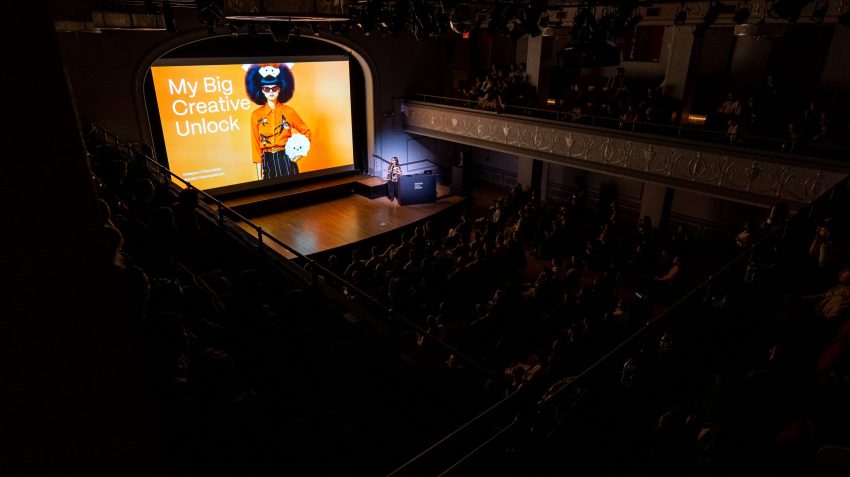
Photo by Paul Turquois
The heart of her message is a call to all creatives: Your weird deserves space. Whether it’s through AI or old-school 3D, don’t wait for permission or a client brief. “Make the thing you wish existed,” she urges. “It doesn’t have to make sense. It has to make you feel something.”
She ends her talk with The Big Fish, a meditative short film about patience, attention, and learning to trust the quiet moments of creative intuition. It’s a poetic reminder that sometimes, what we’re chasing isn’t a finished product, but the quiet joy of being in flow.
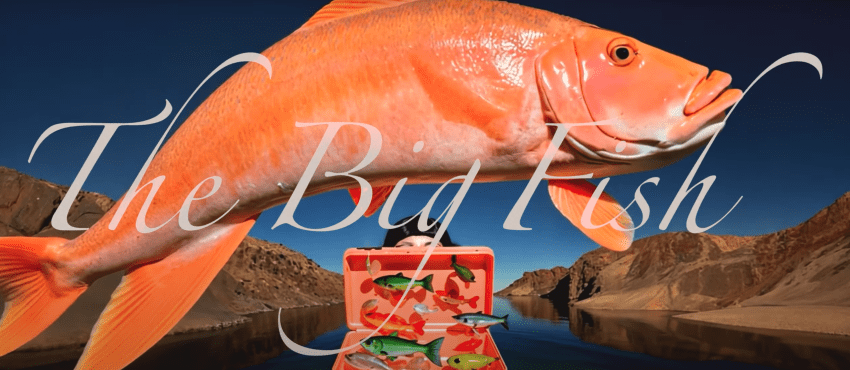
On Augmenting Creativity with AI: The Power Behind AIVE
Olivier Reynaud, co-founder of AIVE (Artificial Intelligence for Video Experiments), delivered a compelling demonstration of how artificial intelligence can revolutionize video post-production, not by replacing creativity, but by amplifying it.
In a world flooded with video content across countless platforms, Olivier asked a simple but urgent question: What if every video could be adapted for every audience, on every format, instantly? AIVE, his answer to this, is not about generating new content, but enhancing and adapting creative work with precision, scale, and emotional resonance.
Olivier showcased AIVE’s AI copilot, which ingests visual and audio content, turns it into data, and allows users to reformat, localize, and personalize content with remarkable ease. From reflowing a Citroën TV ad into Instagram Stories, to summarizing a 35-minute keynote into a 4-minute YouTube cut, AIVE showed off elastic editing, creative scoring, voice-layering, automated subtitles, and even smart reformatting based on center-of-interest tracking. All in real-time.
But beyond the demo, Olivier shared a deeper vision: a future where AI doesn’t just automate production, it empowers creatives to scale their ideas without compromising quality. AIVE’s roadmap even includes intelligent broadcasting, where dynamic A/B testing and data-driven delivery will personalize content at the point of distribution.
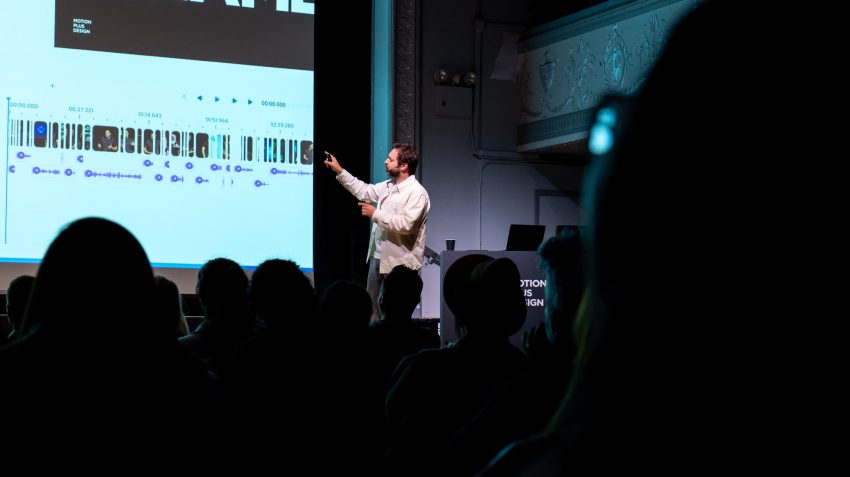
Photo by Paul Turquois
Olivier reminded us that the future of video isn’t about making more, faster, it’s about making better, smarter, and for everyone. With AIVE, creative professionals aren’t replaced, they’re augmented.
“I believe in the power of Creative Artificial Intelligence… I will be brands and creatives’ best friend. My name is AIVE, Ode to Creativity.”
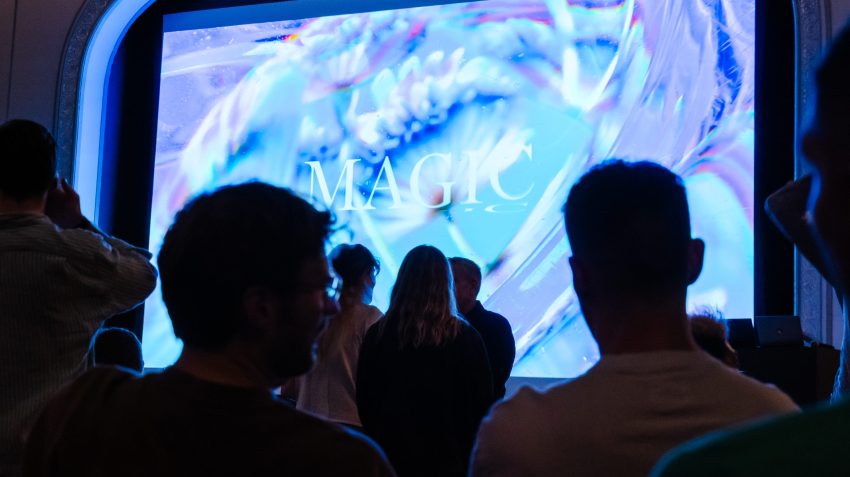
Photo by Paul Turquois
Each speaker made it clear that Motion Design is not just a visual discipline; it is a way of thinking, a stance toward uncertainty, and a tool for inhabiting the present without letting go of the future.
What we witnessed at Motion Plus Design 2025 was not just a showcase of talent; it was a collective manifesto that redefines what it means to create in a world flooded with tools, trends, and information.
In that context, the real value lies not in mastering the technique but in having the courage to use it to say something true. Because in the end, as every speaker reminded us, the real act of design begins the moment we choose to trust our instinct.
Ready to be inspired?
These summaries are just glimpses. The full talks are raw, wise, funny, and deeply resonant.
Watch them all now here and feel the energy for yourself.






